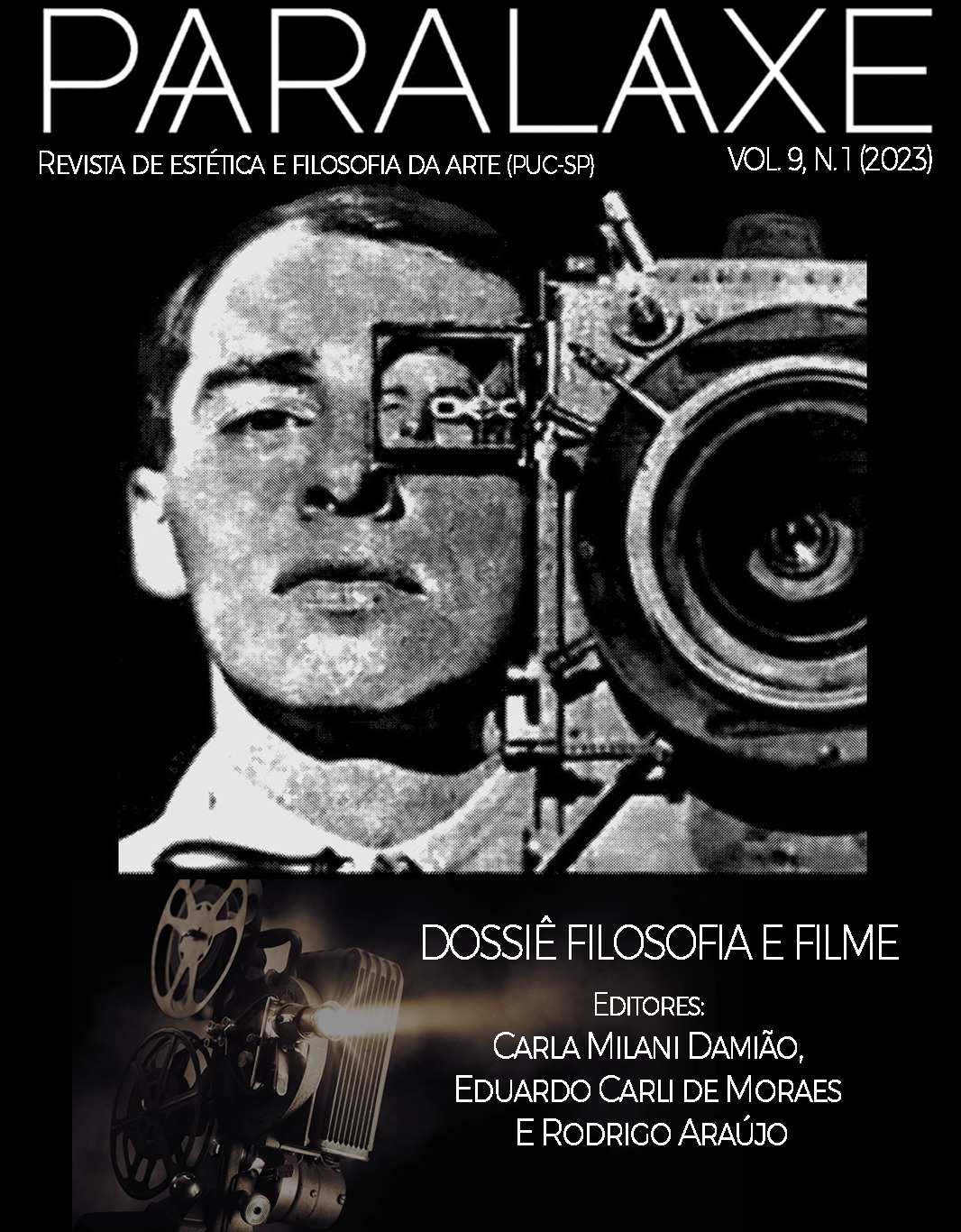The animal that see us
notes on the dialogue of Bresson and Skolimowski
DOI:
https://doi.org/10.23925/2318-9215.2023v9n1D4Keywords:
Cinema, Robert Bresson, Jerzy Skolimowski, Animal, John BergerAbstract
The article brings together two cinematographic productions, Au hasard Balthazar (1966), by Robert Bresson, and EO (2022), by Jerzy Skolimowski, based on the possible influence that the first work has on the second one. Both films intersect due to the proposal to centralize an animal, precisely a donkey, as the protagonist of the narratives, which are given the ability to face both the fable itself and the spectators of the films. The contact between animal and audience, intermediated by the proposals of both directors, opens space for philosophical debates by Berger (1980) and Derrida (2002), in which the definition of what the modern individual is, is raised from the perspective of another, a limited alterity: the animal. In addition, it will be studied how films contribute to the tension between the line that separates human nature from the animalized world, as well as the capacity of the aesthetic experience of cinema to blur it.
References
Filmes referenciados
Au hasard Balthazar. Direção: Robert Bresson. Roteiro: Robert Bresson. França: Cinema Ventures, 1966. DVD (95 min).
Cría Cuervos. Direção: Carlos Saura. Roteiro: Carlos Saura. Espanha: Elías Querejeta Producciones Cinematográficas S.L., 1976. DVD (110 min).
EO. Direção: Jerzy Skolimowski. Roteiro: Jerzy Skolimowski. Polônia: Searchlight Pictures, 2022. (86 min). Disponível em: https://mubi.com/pt/br/films/e-o. Acesso em: 18 ago. 2023.
NOMADLAND. Direção: Chloé Zhao. Roteiro: Chloé Zhao. Estados Unidos da América: Searchlight Pictures, 2020. DVD (108 min).
Referências bibliográficas
A GRANDE TESTEMUNHA: Série de Eventos: MOSTRA BRESSON-MARKER. In: Cinemateca brasileira. [S. l.], 2023. Disponível em: https://www.cinemateca.org.br/exibicao/a-grande-testemunha-2/. Acesso em: 15 ago. 2023.
ARENDT, Hannah. A condição Humana. Tradução: Roberto Raposo. 13. ed. Rio de Janeiro: Forense Universitária, 2017.
BAZIN, André. "Diário de um Pároco de Aldeia" e a estilística de Robert Bresson. In: BAZIN, André. O que é o cinema?. 3. ed. São Paulo: Ubu Editora, 2021. cap. 11, p. 148-167.
BERGER, John. Why Look at Animals?. In: BERGER, John. About Looking. Nova York: Pantheon Books, 1980. p. 1-26.
BERLIN, Isaiah. Os românticos contidos. In: BERLIN, Isaiah. As raízes do Romantismo. Tradução: Isa Mara Lando. 1. ed. São Paulo: Fósforo, 2022. cap. 4, p. 105-136.
BERNARDET, Jean-Claude. O que é cinema?: Coleção Primeiros Passos. 1. ed. Tatuapé, São Paulo: Brasiliense, 1996. 120 p. v. 9.
CIOCHETTI, Vitor Miranda; ULTRAMARI, Nicholas Yoshizato. Pensar as crises com Hannah Arendt: um exercício de pensamento sobre educação, política e pandemia. Primeiros Escritos, São Paulo, v. 11, n. 1, p. 260-271, 13 abr. 2022.
DANIEL, Kasman. The Donkey’s Eyes: Jerzy Skolimowski Discusses “EO”. In: Notebook. [S. l.], 18 nov. 2022. Disponível em: https://mubi.com/en/notebook/posts/the-donkey-s-eyes-jerzy-skolimowski-discusses-eo. Acesso em: 10 set. 2023.
DERRIDA, Jacques. O animal que logo sou. Tradução: Fábio Landa. 1. ed. São Paulo: Editora Unesp, 2002. 92 p.
LISTE des dix meilleurs films de l‘année 1966: (dessin: Alain Le Saux). Cahiers du Cinéma, Paris, ano 7, n. 186, 1 jan. 1967. Rubriques, p. 18-22. Disponível em: https://www.cahiersducinema.com/boutique/produit/n186-janvier-1967/. Acesso em: 12 jul. 2023.
Downloads
Published
How to Cite
Issue
Section
License
Cedo à revista Paralaxe os direitos autorais de publicação de meu artigo e consultarei o editor científico da revista caso queira republicá-lo depois em livro.


